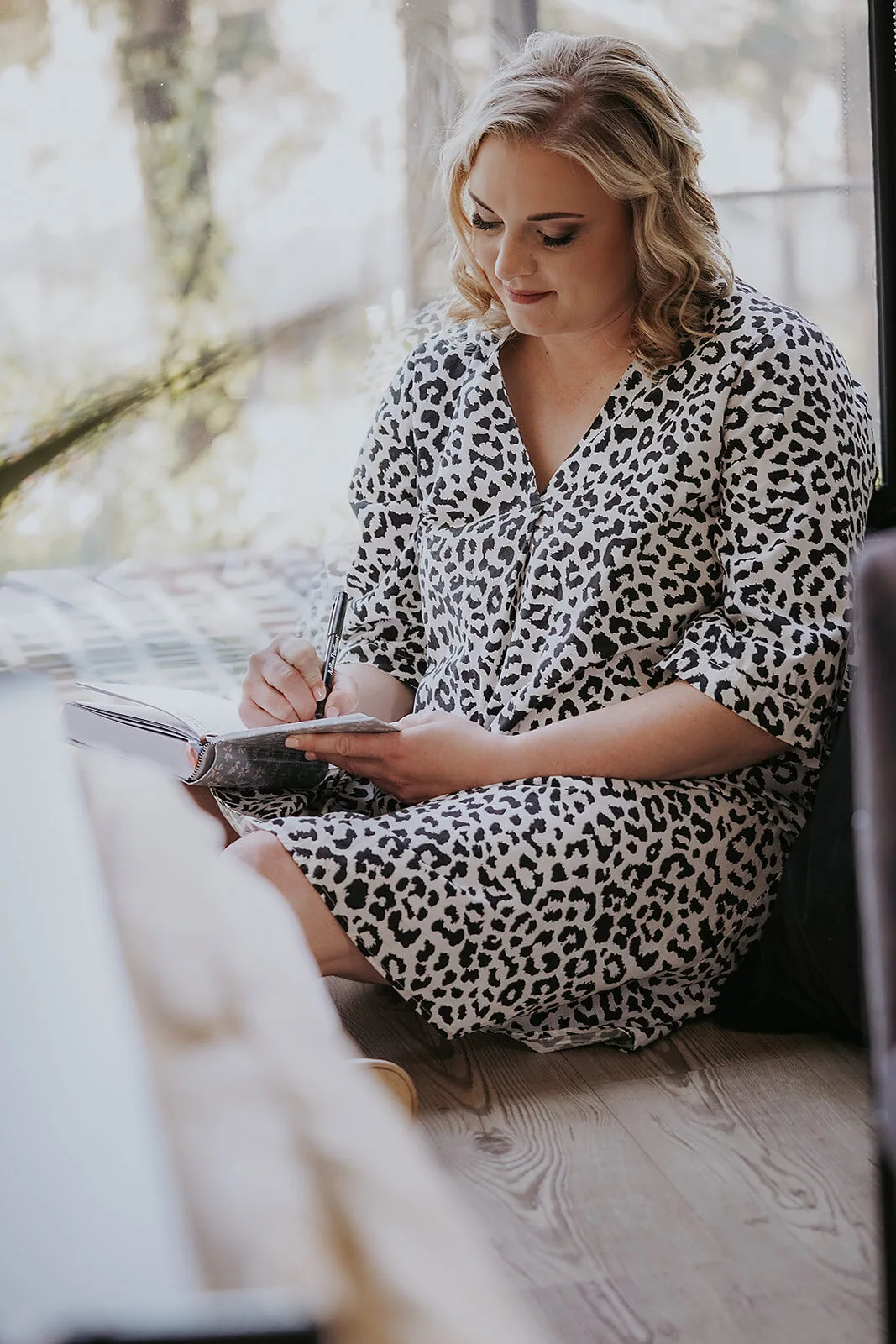Start by setting aside 5-15 minutes daily to write with pen and paper—it’s more effective than digital alternatives for deeper reflection. Use prompts like “What triggered my anxiety today?” and track both emotional states and physical symptoms like racing heartbeats or tension. Don’t worry about perfect writing; emotional honesty beats literary excellence every time. Practise gratitude logging and worst-case scenario exercises to reduce fear’s psychological power, then review weekly entries to spot patterns and measure progress over thirty days for reliable anxiety reduction benefits that’ll reshape your emotional toolkit.
While anxiety can feel like an endless loop of racing thoughts and what-if scenarios, journaling offers a surprisingly effective way to break that cycle. Research shows journaling reduces anxiety symptoms by an average of 9%, making it one of the more reliable self-help strategies you can implement today.
The beauty of journaling for anxiety lies in its simplicity. You don’t need fancy equipment or perfect writing skills—just a willingness to put your thoughts on paper.
Studies indicate that physical pen-and-paper writing may offer deeper reflection than digital alternatives. Apps work fine if convenience matters more to you, especially given South Africa’s increasing mobile connectivity.
Start with daily check-ins that track your emotional states, triggers, and how you responded. When you document situations that provoke anxiety, patterns emerge that you’d otherwise miss. You’ll begin recognising those sneaky cognitive distortions—the catastrophic thinking that makes a delayed WhatsApp message feel like relationship doom.
Prompt-based approaches work exceptionally well for beginners. Try questions like “What initiated today’s anxiety?” or “What evidence supports or contradicts my worried thoughts?”
This structured processing helps you move beyond emotional dumping into actual problem-solving territory.
One particularly effective technique involves writing worst-case scenario narratives. Counterintuitive? Absolutely.
But confronting feared outcomes on paper reduces their psychological power through habituation. You’re fundamentally training your brain to recognise that imagined disasters rarely unfold as dramatically as anxiety predicts.
Stream-of-consciousness writing serves as mental detox. Set a timer for ten minutes and write whatever comes to mind without editing or censoring.
This emotional triage helps categorise feelings—distinguishing between anger, sadness, and fear. You can then address root causes instead of swimming in generalised distress.
Don’t overlook gratitude logging, which redirects attention from anxious rumination towards positive aspects of your life. Even brief entries acknowledging small wins create cognitive balance that anxiety desperately needs. This practice proves particularly valuable during South Africa’s challenging times when positive focus becomes essential.
Track physiological responses alongside emotional ones. Note racing heartbeats, nausea, or tension headaches tied to anxious moments. This body awareness builds emotional intelligence and helps you catch anxiety earlier in its progression.
Consistency matters more than duration. Research shows interventions lasting over 30 days produce more reliable benefits than sporadic marathon sessions. Even five-minute entries help if you maintain regular practice. Remember that a simple plain notebook works perfectly well to begin your journaling practice.
Address common pitfalls proactively. Perfectionism kills journaling habits faster than anything else. Accept grammatical mistakes and messy thoughts—emotional honesty trumps literary excellence every time.
Skip dates occasionally or revisit old entries for pattern recognition without rigid chronological pressure. Review your entries weekly to identify recurring stressors and improvement trends. This progress monitoring reveals incremental changes that daily anxiety fluctuations might obscure. Most journaling sessions require only 5–15 minutes to effectively express and process current thoughts and emotions.
Journaling integrates beautifully with professional therapy, particularly CBT approaches available through South African healthcare providers. Your written observations provide significant material for sessions whilst extending therapeutic work between appointments. Think of it as homework that actually reduces stress instead of creating it.
Frequently Asked Questions
What if I Don’t Know What to Write About When Journaling?
Start with simple prompts like “What’s one thing I noticed today?” or describe your current surroundings using your five senses. You can also try stream-of-consciousness writing, jotting down whatever thoughts come to mind.
How Long Should Each Journaling Session Last for Anxiety Relief?
Start with 5-15 minute sessions when you’re beginning or overwhelmed. You’ll find 20-minute sessions work best for deeper processing. Always include 10-15 minutes afterwards for emotional changeover and grounding activities.
Is It Better to Journal in the Morning or Evening?
Evening journalling typically works better for anxiety relief. You’ll unload mental clutter, reduce racing thoughts, and improve sleep quality by writing task-orientated to-do lists rather than purely reflective content.
What Should I Do if Journaling Makes My Anxiety Worse?
Stop journalling temporarily when it increases your anxiety. Try structured prompts instead of free-writing, limit sessions to five minutes, and follow up with physical movement to reset your emotional state.
Can I Use Digital Apps Instead of Traditional Pen and Paper?
You can absolutely use digital apps instead of pen and paper. They’re convenient, secure, and research-proven effective for anxiety reduction. Choose apps with CBT features and progress tracking for best results.





